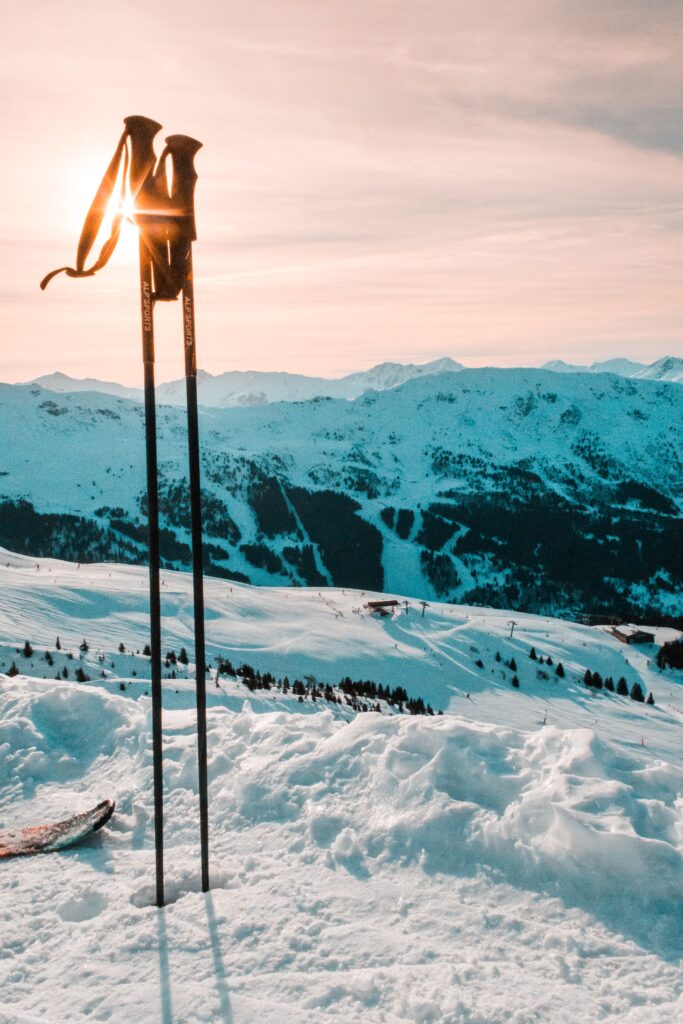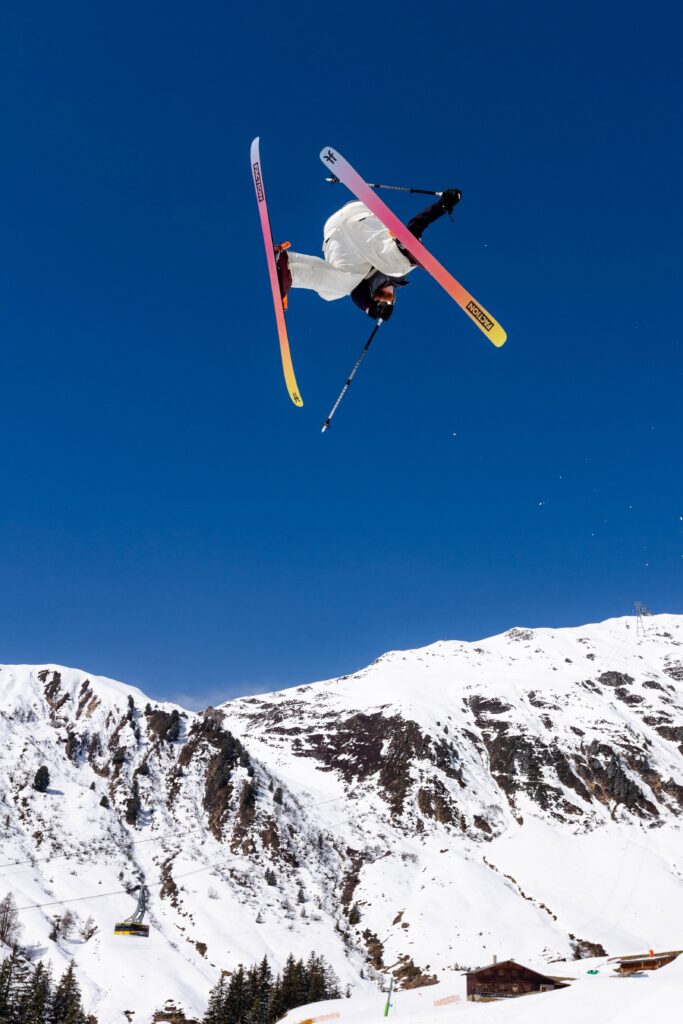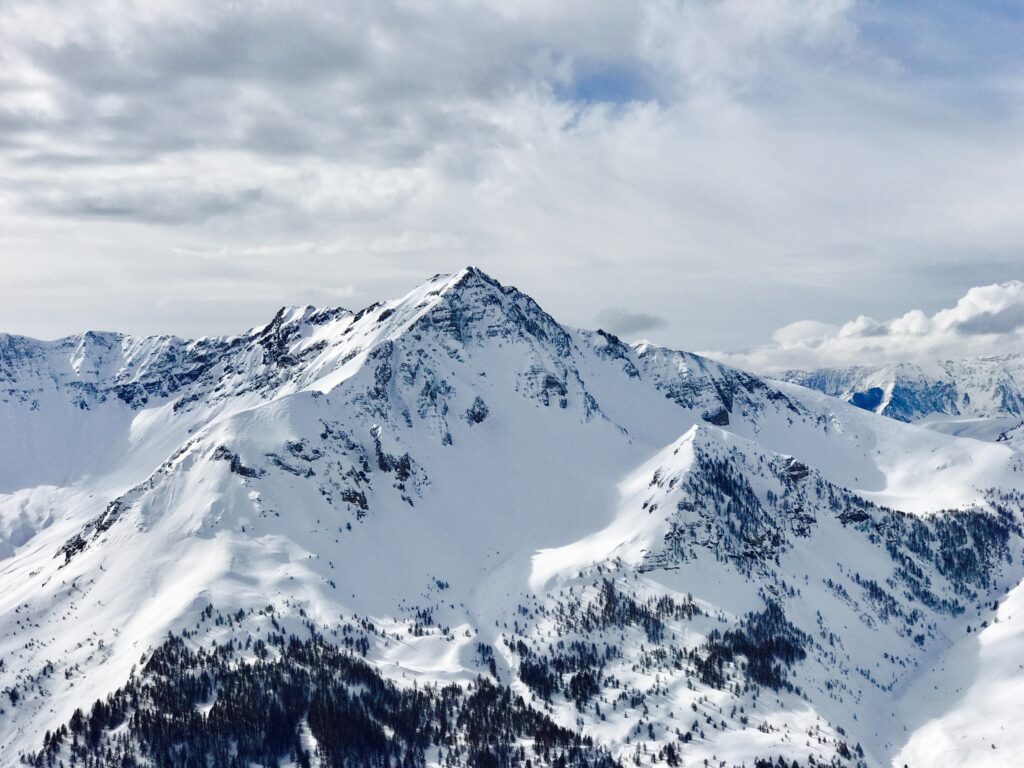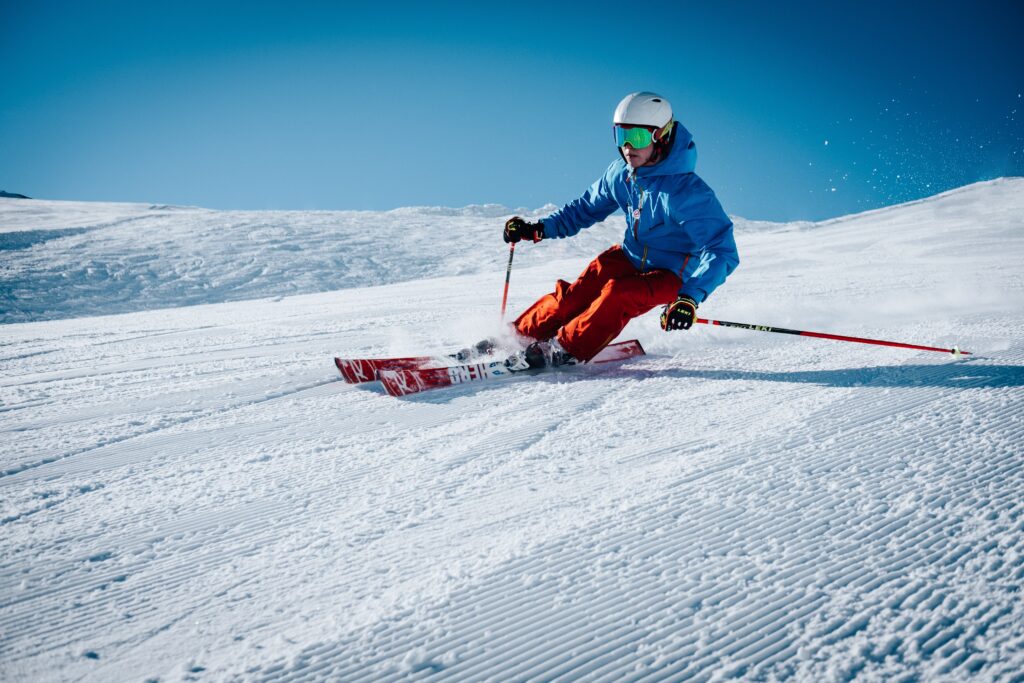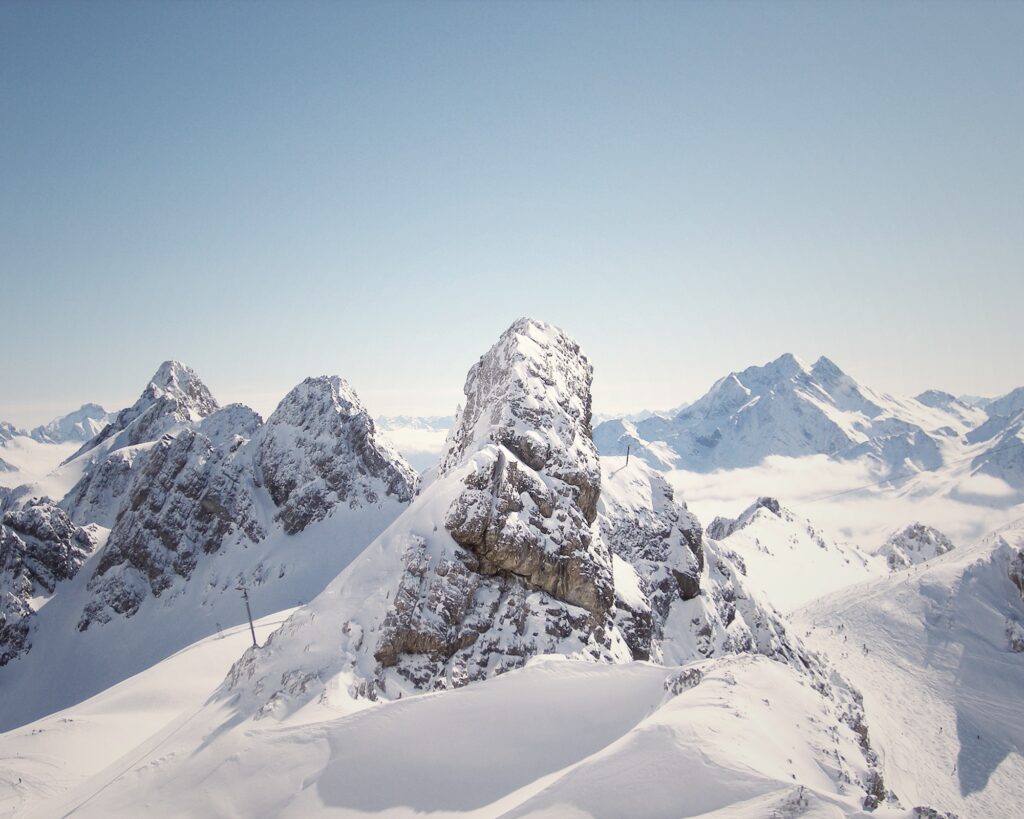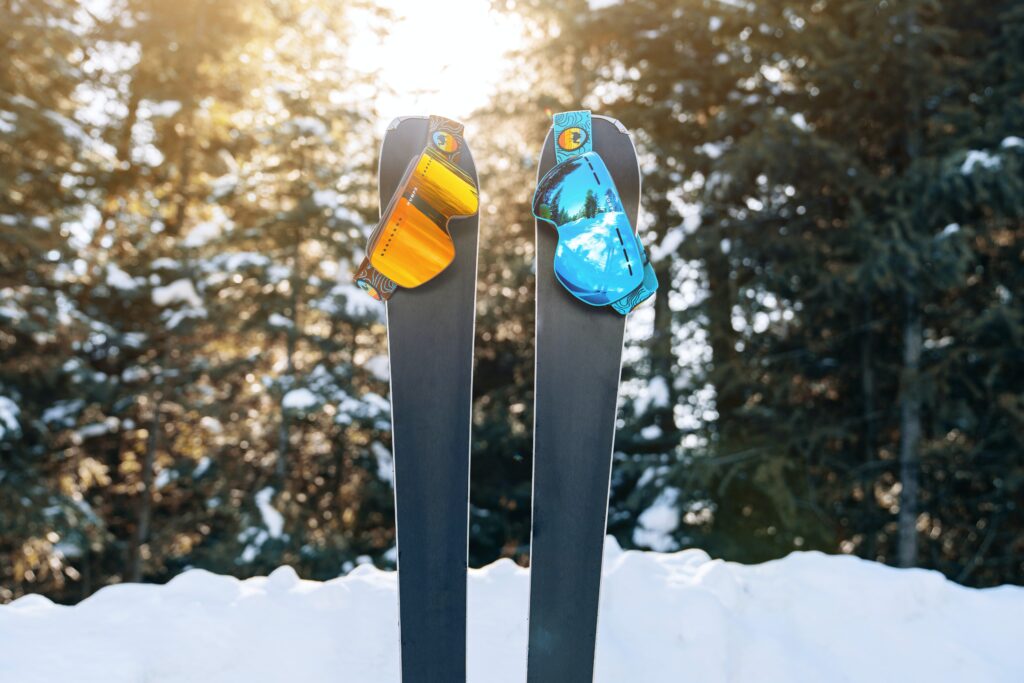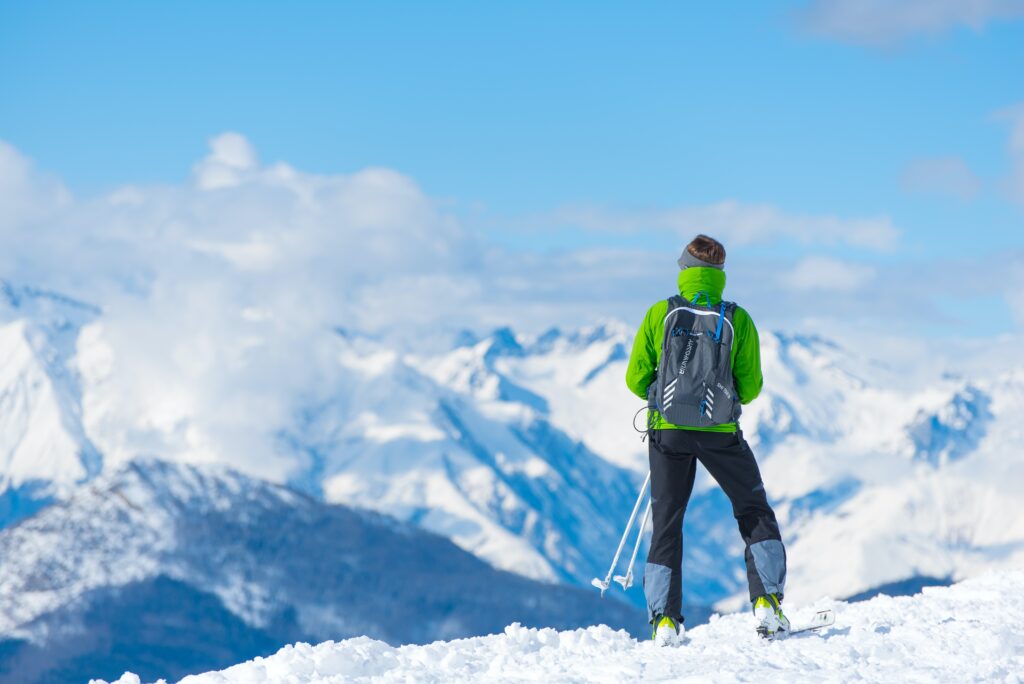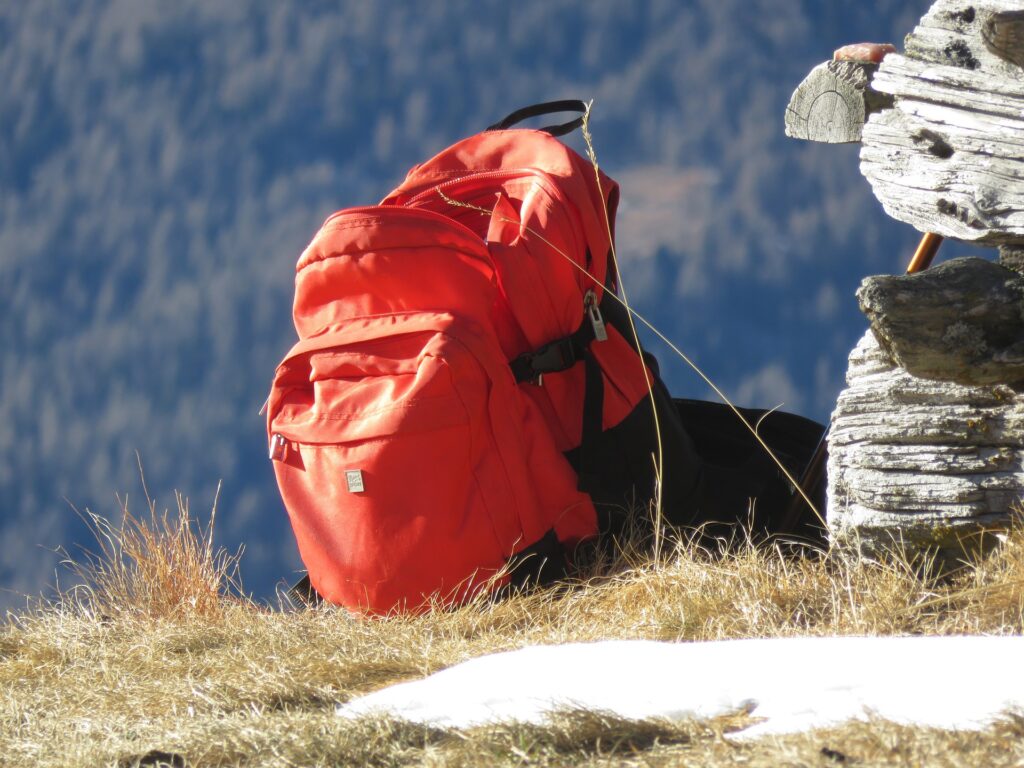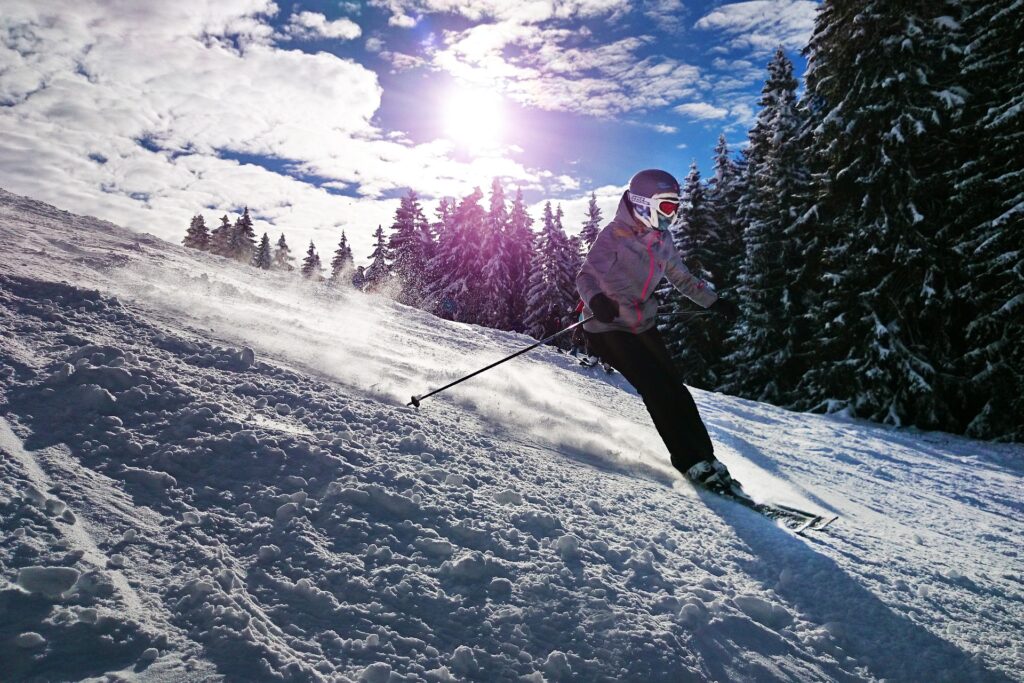Introduction
Skiing is not just a sport; it’s a thrilling adventure that takes you to the heart of the mountains, surrounded by pristine snow and breathtaking vistas. Whether you’re a winter enthusiast looking to learn how to ski or someone who wants to embrace the magic of the slopes, learning how to ski and how to dress for ski is a fantastic choice. This comprehensive guide will walk you through the basics, step by step, ensuring you have a safe and enjoyable experience on the mountainside. Before we get into the actual components of learning how to ski… it is essential to choose the right ski gear. Hence, we will start this guide with “Choosing the Right Ski Gear,” a crucial starting point for any aspiring skier.
Choosing the Right Ski Gear
Before you hit the slopes and learn how to ski, you must have the right gear. Proper equipment ensures your safety and comfort, making it a top priority in your skiing journey. Here’s what you need to know while learning how to ski:
1.1 Skis
Ski selection is critical because different types of skis are designed for specific purposes. If you’re a beginner, opt for all-mountain skis. They provide stability and versatility, making them ideal for learning the ropes. Make sure your skis are the right length; generally, they should be about chin height.
1.2 Ski Boots
Learning how to put on ski boots play a pivotal role in your skiing experience. They should fit snugly but not too tight, as comfort is key. It’s recommended to get your boots professionally fitted to ensure they are suitable for your foot shape and skiing style.
1.3 Poles
During that phase of learning how to ski, ski poles assist with balance and maneuvering. To determine the right pole length, stand upright with your arms at your sides. Bend your elbows at a 90-degree angle and hold the poles; they should touch the ground without your shoulders hunching.
1.4 Bindings
Bindings are what connect your boots to your skis. They should be properly adjusted by a certified technician to release when necessary for safety.
1.5 Clothing and Accessories
Layering is crucial for staying warm and dry while skiing. Invest in moisture-wicking base layers, insulated pants and jackets, waterproof gloves, a helmet, and goggles to protect yourself from the elements.
1.6 Ski Helmet
Safety should always come first. A ski helmet will protect your head in case of a fall or collision. Make sure it fits snugly and comfortably.
Now that you have the right gear, let’s move on to the next step of learning how to ski: comprehending the basic skiing techniques.
Mastering Basic Skiing Techniques
2.1 Body Position
It is vital to grasp while learning how to ski that proper body positioning is the foundation of skiing. Bend your knees and keep your weight centered over your skis. Lean forward slightly, maintaining a relaxed but forward posture. This position provides balance and control.
2.2 Balancing on Skis
Find your balance by evenly distributing your weight on both skis. Imagine a line running down the middle of your body, with equal weight on each side. This ensures stability while gliding down the slope.
2.3 Gliding and Sliding
During the process of learning how to ski, begin with gentle slopes and practice gliding. Point your skis in the direction you want to go and gently shift your weight from side to side to initiate movement. Avoid leaning back, as this can cause you to lose control.
2.4 Snowplow or Pizza Slice Technique
The snowplow technique is essential for slowing down and stopping. To perform it, push the tails of your skis outward, forming a V shape with the tips close together. This widens your base, creating resistance and slowing your descent.
2.5 Turning Techniques
As you learn how to ski, you begin to gain confidence, learn to make basic turns. Start with the wedge turn, which involves shifting your weight to one ski to initiate the turn, then gradually transfer your weight to the other ski as you complete the turn.
2.6 How to parallel ski
How to ski parallel is the goal for most skiers. In this technique, your skis are parallel to each other throughout the turn. Practice this by gradually reducing the snowplow angle until you can ski with your skis in line.
2.7 Edging
Whilst learning how to ski, edging is crucial for control and precision. Tilt your skis on their edges to grip the snow and direct your path. Practice making both gentle and sharp turns by controlling the edge angle.
2.8 Controlling Speed
Controlling your speed is essential for safety. To slow down, use the snowplow technique and lean back slightly. To increase speed, stand taller and shift your weight forward.
2.9 Lifts and Tows
Learn how to use ski lifts or tows, as they are essential for accessing higher slopes. Pay attention to lift attendants’ instructions, and practice getting on and off the lifts safely.
By mastering these basic skiing techniques, you’ll be well on your way to becoming a confident skier. But there’s more to learn before you hit the advanced slopes.
Understanding Skiing Etiquette and Safety
3.1 Skiing Etiquette
Skiing etiquette ensures a safe and enjoyable experience for everyone on the mountain. Some key points include:
- Yield to skiers downhill or in front of you.
- Look uphill and yield when merging onto a trail.
- Stay in control and avoid reckless skiing.
- Respect designated areas for skiing and off-piste skiing.
- Help fellow skiers in need, and report accidents to ski patrol.
3.2 Safety Precautions
Safety should always be your top priority. Here are some essential safety precautions to use as a guide when learning how to ski:
- Be aware of weather conditions and avalanche risks.
- Ski with a buddy or in a group when possible.
- Carry necessary safety equipment, such as an avalanche beacon, shovel, and probe.
- Follow trail markings and obey warning signs.
- Know the mountain’s emergency contact numbers and locations of first aid stations.
3.3 Avalanche Awareness
If you plan to ski in areas prone to avalanches, take an avalanche safety course. Learn how to recognize avalanche terrain, use safety equipment, and perform companion rescue.
3.4 Cold Weather Precautions
Protect yourself from cold-related injuries. Dress in layers, stay hydrated, and take regular breaks to warm up. Frostbite and hypothermia can be serious risks in cold mountain environments.
3.5 Mountain Navigation
Familiarize yourself with the mountain’s trail map. That is essential for anyone learning how to ski or even ski professionals… Carry a physical copy or use a GPS device. Knowing the terrain and where you are can prevent you from getting lost.
With skiing etiquette and safety precautions in mind, you’ll be well-prepared for your skiing adventures. Now, let’s delve into more advanced skiing techniques.
Mastering Advanced Skiing Techniques
4.1 Carving
Carving involves making clean, smooth turns by using the edges of your skis. It requires precise edge control and weight distribution. Practice on groomed slopes to perfect this technique.
4.2 Mogul Skiing
Moguls are challenging bumps on the slope. Learn to absorb their impact by flexing your knees and ankles. Ski between the moguls, not over them, to maintain control.
4.3 Off-Piste Skiing
Off-piste skiing takes you into unmarked terrain. It’s essential to have proper equipment, avalanche awareness, and advanced skiing skills. Always go with an experienced off-piste guide if you’re new to this terrain.
4.4 Powder Skiing
Powder skiing is exhilarating but requires a different technique. Lean back slightly, keep your skis close, and make wider turns to float on the snow’s surface.
4.5 Freestyle Skiing
For those seeking tricks and jumps, freestyle skiing is the way to go. Learn tricks such as 360s, grabs, and rails in terrain parks. Safety gear is crucial when attempting freestyle moves.
4.6 Tree and Glade Skiing
Skiing through trees and glades demands agility and quick decision-making. Choose your path carefully, make short turns, and maintain a controlled speed.
4.7 Steep Slopes and Chutes
Steep slopes and chutes offer a thrilling challenge. Maintain a centered stance, control your speed with short, controlled turns, and stay focused on your line.
4.8 Racing and Slalom
If you have a competitive streak, consider racing. Slalom skiing involves navigating a course marked by gates. Precision and agility are key to success.
As you progress in your skiing journey, remember that practice makes perfect. We all start learning how to ski, somewhere. Consistent effort and determination will help you become a skilled skier, capable of conquering a variety of terrains.
Taking Care of Your Gear
5.1 Equipment Maintenance
Always while learning how to ski or even as an advanced skier, regularly inspect and maintain your ski equipment. Check for any signs of wear and tear, such as damaged edges or bindings. Keeping your gear in top condition ensures safety and performance.
5.2 Ski Tuning
Periodically tune your skis to maintain their sharp edges and proper base structure. You can either learn to do this yourself or take them to a professional ski shop for tuning.
5.3 Boot Care
Clean and dry your ski boots after each use to prevent moisture buildup and odor. Make sure the liners are well-maintained and replace them if necessary.
5.4 Storage
Store your gear in a cool, dry place during the offseason. Avoid leaving them in direct sunlight or damp areas, as this can damage the materials.
5.5 Gear Replacement
As you progress in your skiing skills, you may need to upgrade your equipment to match your abilities. Consult with a knowledgeable salesperson or ski technician for guidance.
Exploring Different Types of Skiing
6.1 Cross-Country Skiing
Cross-country skiing is a fantastic way to explore winter landscapes. It’s a cardio-intensive activity that allows you to glide through serene snow-covered terrain.
6.2 Backcountry Skiing
For adventurous skiers, backcountry skiing takes you off the beaten path into remote wilderness areas. Be sure to have the necessary gear, avalanche awareness, and advanced skiing skills.
6.3 Telemark Skiing
Telemark skiing is a unique style that combines elements of downhill and cross-country skiing. It’s known for its graceful, free-heel turns.
6.4 Nordic Skiing
Nordic skiing encompasses both cross-country and ski jumping. It’s a popular sport in countries with a strong winter tradition, like Norway and Finland.
6.5 Adaptive Skiing
Adaptive skiing is tailored for individuals with disabilities, allowing them to enjoy the slopes with the help of adaptive equipment and skilled instructors.
Continuing Your Skiing Journey
7.1 Ski Schools and Lessons
If you are currently learning how to ski, consider enrolling in a ski school or taking lessons with a certified instructor, especially if you’re a beginner. They can provide personalized guidance and help you progress faster.
7.2 Skiing Communities
Join local skiing clubs or online forums to connect with fellow skiers. You can gain valuable tips, share experiences, and find skiing buddies.
7.3 Skiing Vacations
Explore different ski resorts around the world. Each destination offers a unique skiing experience, from the snowy peaks of the Alps to the powder fields of Japan.
7.4 Skiing Competitions
If you’re passionate about skiing, consider participating in local or regional skiing competitions. It’s a great way to challenge yourself and meet like-minded enthusiasts.
Conclusion
Skiing is a thrilling and rewarding sport that opens up a world of adventure. This article isn’t limited to people who search for “how to ski for beginners”. Whether you’re a beginner or an experienced skier, there’s always something new to explore on the slopes. By following the steps outlined in this comprehensive guide and embracing the skiing expressions mentioned, you’ll be well on your way to becoming a skilled and confident skier. So, gear up, hit the mountains, and let the joy of skiing become a part of your winter tradition. Enjoy the exhilaration of carving down the slopes, the camaraderie of fellow skiers, and the beauty of the winter wonderland that awaits you. Remember, the journey to becoming a proficient skier is an ongoing one, and each day on the slopes brings new adventures and challenges. Happy skiing!
